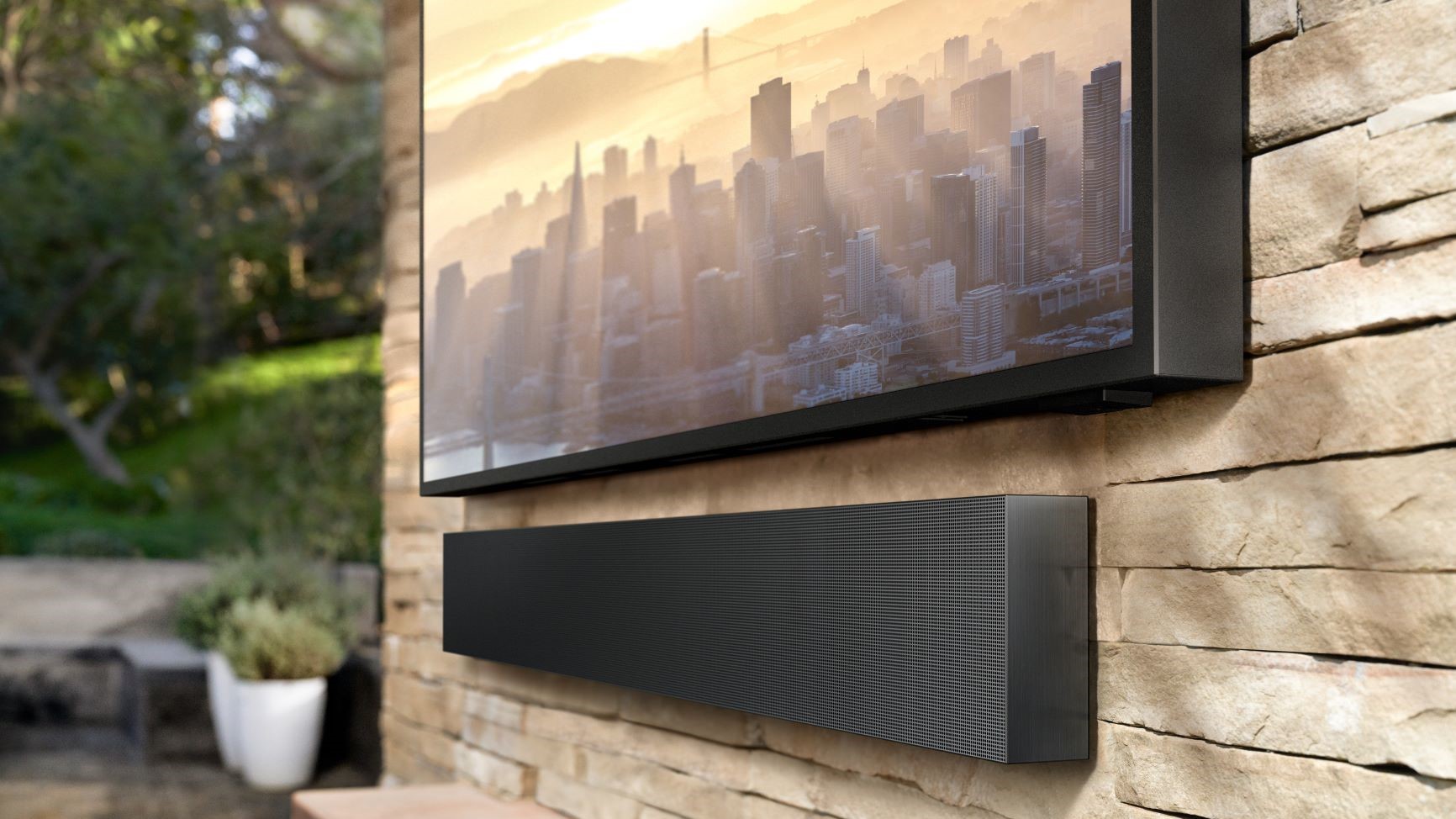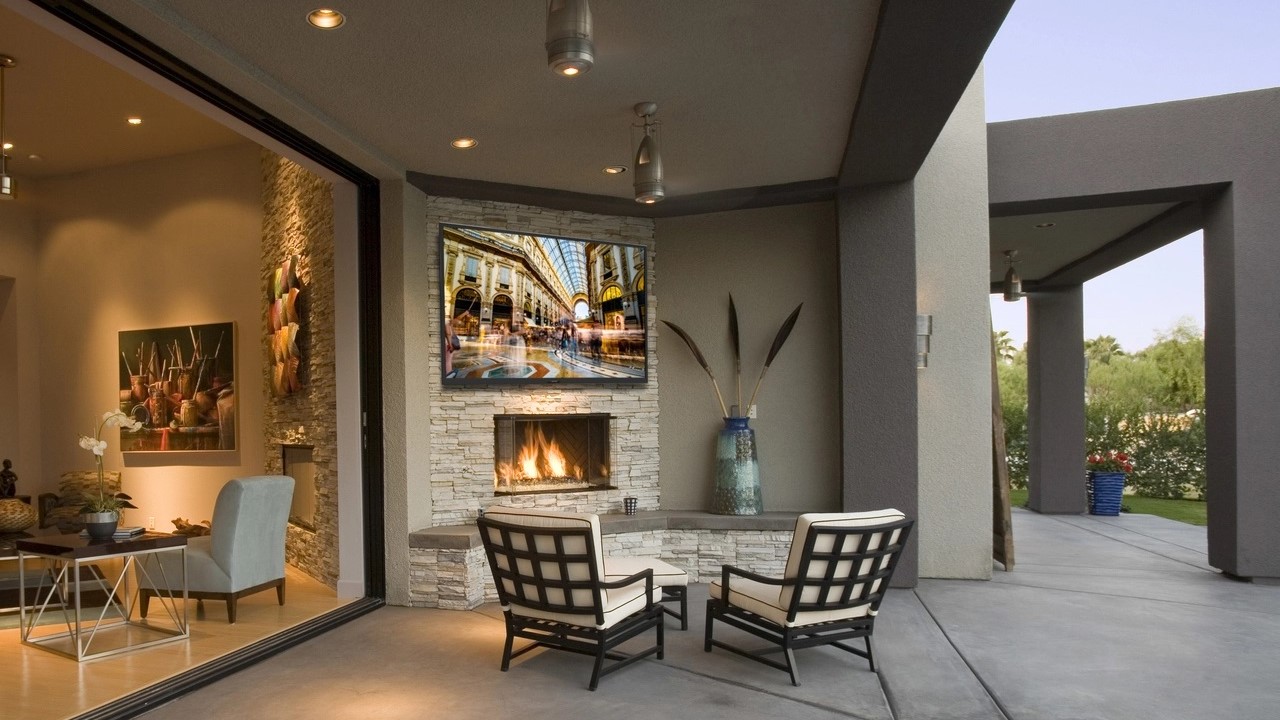Outdoor TV: Can I use an indoor set to watch outside?
Regular 4K TVs are not made to weather the elements

With summer upon us – in the northern hemisphere at least – and the weather heating up, you may be wondering if it’s okay to use a regular indoor 4K TV for watching outside. No, it’s not okay. Let me explain why.
Brightness matters
First off, let’s say you were to take a regular TV outside, connect it to power using an extension cord, link it to Wi-Fi, and start streaming Netflix. There’s the basic problem of the sun – sunlight is a mighty powerful illumination source for a TV to compete with, even the latest models that are capable of delivering high screen brightness.
Another related problem is glare. Most TVs have a reflective screen coating that shines light back to some degree, and that can interfere with image clarity. Screen reflections are a problem even indoors when care isn’t taken to dim overhead lights and cover windows; outdoors, they can make a TV’s picture nearly impossible to watch.
Weather is the enemy
And those are just the basic issues. Condensation from temperature changes, along with moisture of any sort, can spell death for electronic components like TVs. So can extreme hot and cold temperatures. TV makers usually include an operating temperature range in their spec sheets – somewhere in the area of -4 to 140 degrees Fahrenheit (-4 to 60 degrees Celsius) – mainly for storage purposes. And that spec clearly tells you problems will arise in areas where the weather can dip below freezing if the set is outdoors. Damaged electronics pose a fire hazard, so beyond just having your TV ruined, there’s the possibility of damage spreading to your yard and home.
Now let’s talk insects. Any car owner knows that bugs can burrow into the most surprising places: I once had to have my car’s AC repaired because a spider had nested in a hose used by the system. Think of where that spider would get to in a TV installed outdoors! Dust and pollen are also a problem, and if you live near the ocean, salt air will undoubtedly be unkind to both the set’s cabinet and screen.
Just in case you were wondering, none of the damage related to installing an indoor TV outdoors that I’ve described above will be covered by your set’s warranty.

Outdoor TVs: the right stuff
Now that we’ve covered the reasons why you shouldn’t put your TV outside, let’s discuss sets that you can use for watching outdoors. Companies like Samsung, SunBrite, Furrion, and others make special models that are purpose-built for year-round outdoor installation. These use powder-coated, moisture-sealed cabinets along with glare-resistant screens. And as you’ve probably already guessed, they cost more than regular indoor TVs – twice as much in some cases.
Get daily insight, inspiration and deals in your inbox
Sign up for breaking news, reviews, opinion, top tech deals, and more.
Since they’re designed to be used for viewing in daylight, outdoor TVs are generally very bright, delivering upward of 2,000 nits in some instances. Many also support high dynamic range, and some like Samsung’s The Terrace models are QLED sets with quantum dots for enhanced color reproduction. (Samsung has also introduced an 85-inch Neo QLED model with a mini-LED backlight.) Outdoor TVs are divided into two categories, Full Shade and Partial Sun, with Partial Sun models being pricier due to their higher brightness capability.
Of course, outdoor TVs are designed to operate in extreme conditions, so you can leave them outside without worry in freezing weather or in high heat – the latter something those living in the southwestern part of the US will know plenty about. And since an outdoor TV’s warranty will fully cover outdoor use, you don’t have to worry about the ravages of weather.

A cheap alternative: outdoor projectors
Looking for a cheaper and less permanent outdoor viewing option? A portable outdoor projector is ideal for a neighborhood movie night where it can beam images on a garage wall or be paired with a portable screen. Such models are typically inexpensive, and many have a rechargeable battery so you don’t have to worry about running cords for power. And while 4K portable projectors are available, the picture quality downside to any portable model is that brightness will be considerably less powerful when running off the battery, so you’ll need to take that movie night concept literally.
Recommended outdoor TVs
- Samsung 75-inch The Terrace outdoor QLED 4K smart TV – partial sun
- SunBrite 65-inch Veranda 3 Series - Outdoor Smart TV – full-shade
- Furrion 55-inch Aurora 4K LED Outdoor TV – partial sun

Al Griffin has been writing about and reviewing A/V tech since the days LaserDiscs roamed the earth, and was previously the editor of Sound & Vision magazine.
When not reviewing the latest and greatest gear or watching movies at home, he can usually be found out and about on a bike.